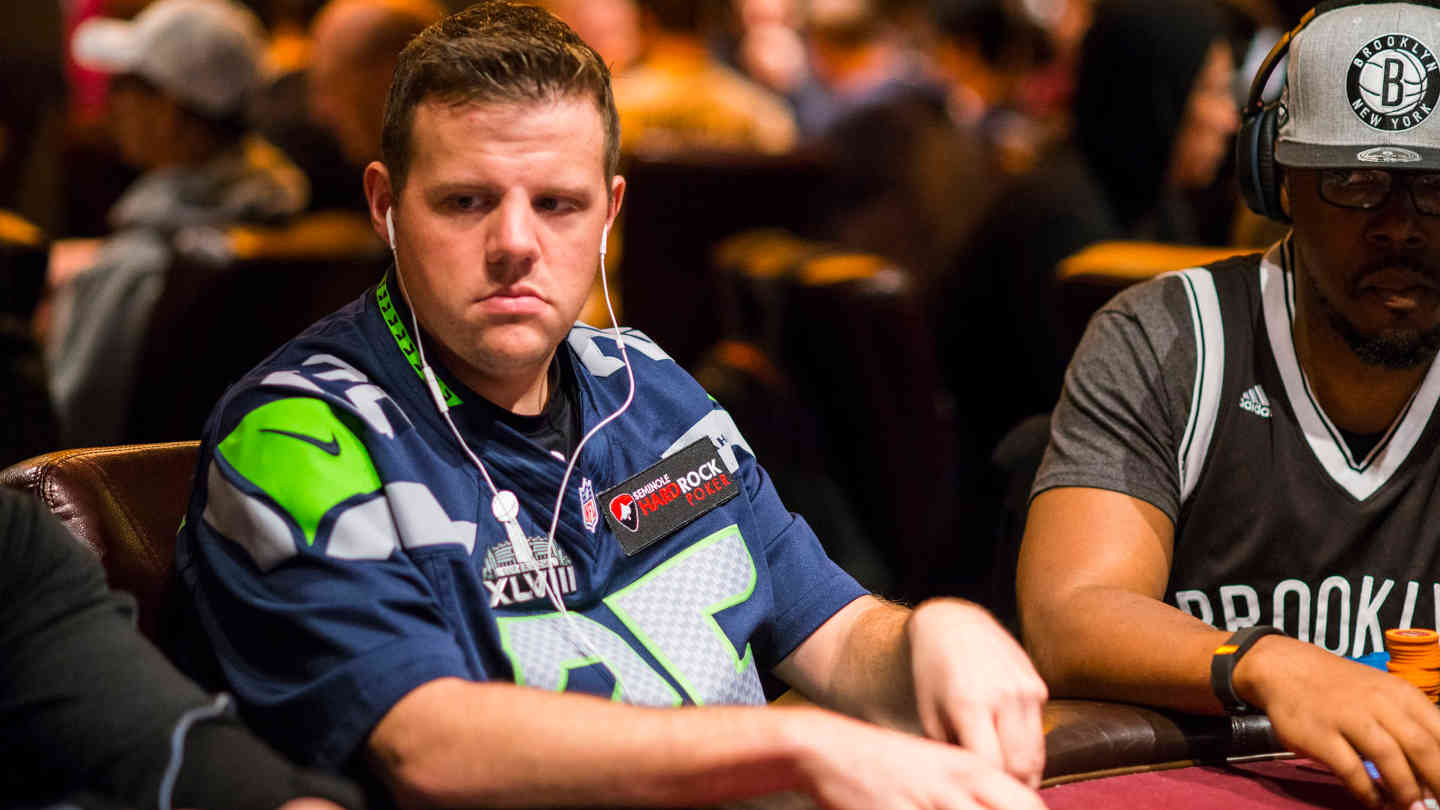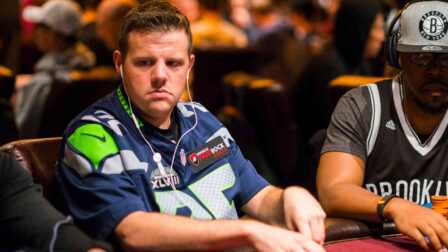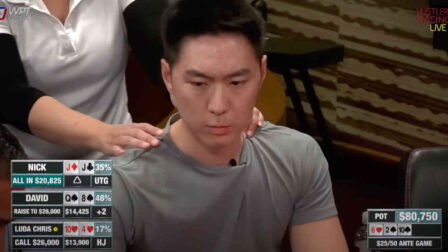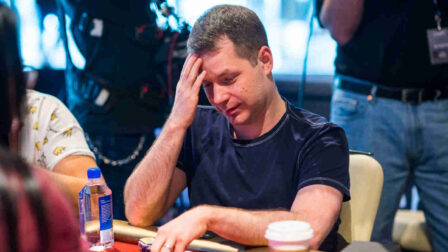Freezeout Poker Strategy – How to Win Tournaments More Often

13 minutes
Last Updated: March 19, 2024
These days, there are so many different tournament formats – rebuys, reentries, knockouts, progressive knockouts – you name it. Whatever happened to good, old freezeout poker MTTs?
Poker freezeout tournaments are still there, but like everything else in online poker, they've become tougher over the years.
In this article, I’ll give you a solid, no-nonsense strategy for Texas Hold’em freezeout tournaments from start to finish.
It's not the perfect strategy, and there is always room for improvement, but with it, you'll be able to hold your own in most small and low stakes buy-in tournaments and turn a profit using the advice in this article.
What Is a Freezeout Poker Tournament?
To start at the very top, let’s answer the most important question: what is a freezeout poker tournament?
As the name suggests, it's the kind of tournament where, once you're eliminated – you're out.
There is no option to buy more chips, and you can't go to the tournament lobby to enter again with a fresh stack.
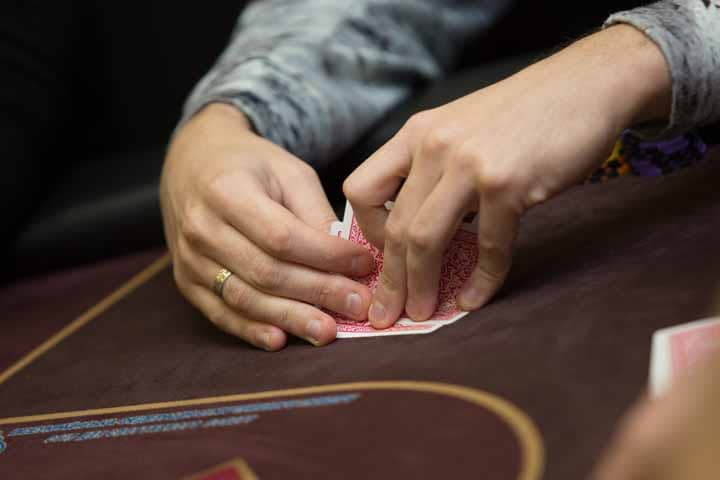
Back in the day, most tournaments were played in the freezeout format. Recently, there's been a shift towards other, more “exciting” options, if you will, but many still consider the poker freezeout format one of the purest out there.
It’s probably why the WSOP Main Event has maintained this setup over the years despite all the pressure. Recreational players love freezeout MTTs because they don't feel like players with bigger bankrolls have the edge over them.
Poker Freezeout MTT Strategy Fundamentals
Before I go into the meat and potatoes of the freezeout strategy, it's important to look at some general aspects of this format.
Understanding these fundamentals is vital because it provides you with the right framework for thinking about freezeout poker tournaments right of the gate and understand the worth of different poker hands.
Importance of Survival
The number one thing you’ll often hear players talk about is the importance of preserving your chips and your “tournament life.”
In this format, you only get one “life.” When your stack is gone, when you lose your last chips, it’s game over.
The best you can do is move on to the next event or, alternatively, go back to your room to sulk about the bad beat.
You should never risk your entire stack if you don’t have to in freezeout poker tournaments.
Yes, it seems like something that goes without saying, but players often forget about it in the heat of the moment.
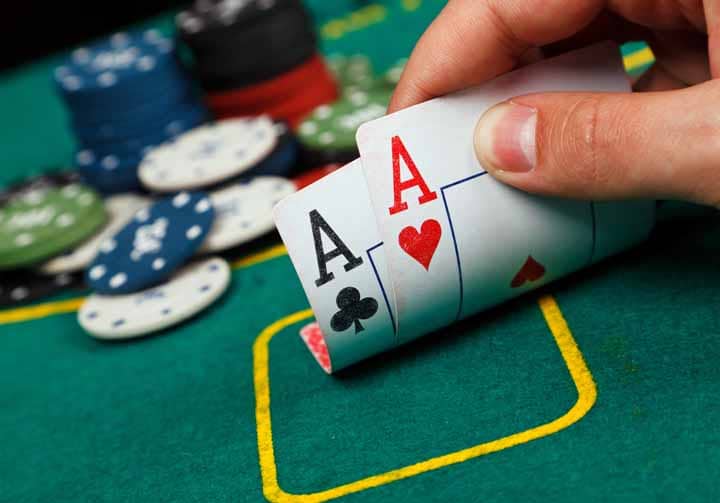
Importance of Making the Money & ICM
If you’re just at the start of your poker career, you might think that you’ll just come out swinging and win a bunch of tournaments right off the bat.
The fact is, this is highly unlikely to happen.
You’re not going to win most tournaments you play in, and that’s fine. Winning a few out of hundreds you play is more than enough, as long as you do okay in the rest of them.
Making into the money is very important.
Your first order of business in freezeout poker tournaments is getting past the bubble. Once that happens, it’s a whole different ball game.
To better understand how you should play around the bubble and what is the best way to take advantage of pay jumps, you will need to learn about the Independent Chip Model or ICM.

I won’t go into details of ICM in this article because that would make it way too long, but there is an excellent article on ICM poker that you should check out when you’re done reading this.
Freezeout Poker Strategy by Stages: Put Your Stack to Work
Freezeout poker tournaments, like all tournaments, are marked by increasing blind levels. At the very start, you might receive 10,000 chips, and that's 200 big blinds.
However, that same stack might be worth just 100 or 50 big blinds a couple of hours later.
You can’t ignore the fact that blinds keep on increasing. I mean, you could, but that won’t help you improve your results.
In general, tournaments are divided into three stages:
- Early
- Middle
- and Late.
Every stage has its own challenges and requires certain strategic adjustments, which is exactly what we will cover next.
Early Stages of Poker Freezeout Tournaments
If you've been dabbling with different tournament formats, you might feel confused about the right strategy during the early stages.
There is simply no one-fits-all approach that works for all tournament varieties.
When it comes to freezeout tournaments, though, your strategy during the first few levels should be quite straightforward:
- Avoid tricky spots
- Wait for big hands to play big pots
- Don't get too committed with your mediocre hands.
Not everyone's going to agree with this approach. Some very good players believe that you should play very aggressively during the early stages for a few reasons:
- The number of bad players in the field is the biggest early on
- Bad players are likely to make bigger mistakes when they’re deep (100+ big blinds)
- If you bust early on, you move on to the next one and try to build a stack there.
I'm not saying there is anything wrong with this strategy. You can definitely try it out, but it will likely increase the variance, which is already quite brutal in tournaments, especially in freezeout poker MTTs.
Also, to really play this style correctly, you’ll need to be much better than most players at your table.
For someone just dipping their toes in the MTT waters, though, I’d suggest a more conservative approach.
From early positions, only play your strongest hands.
As you get closer to the button, you can start to expand your ranges a little bit, but there is no reason to go wild.
The main thing to think about is the importance of survival. You really don’t want to bust early on with a bad hand that started by you trying to steal the blinds.
Stealing blinds during the early stages is almost insignificant.
If you have 200 or 150 big blinds in your stack, adding an extra blind or two won't make any difference.
Stick to solid ABC poker for the first few levels and wait for other players to make mistakes. Observe your opponents and see if there is someone who's trigger happy and looks ready to blow away their stack at the first opportunity.
Middle Phase: Navigating the Stormy Seas
As much as you want to preserve your tournament life, you won't be able to do it by just sitting around on your hands. The freezeout poker tournament structure is such that it forces you to keep your head above the water.
After the first few levels, you’ll enter what’s usually referred to as the middle stage.
Unless you’ve caught some big hands in the early phase, you’ll usually have a stack with 30 to 60 big blinds, and the pressure will be mounting. With every new level, the number of blinds in your stack will decrease even if you don’t lose a single pot.
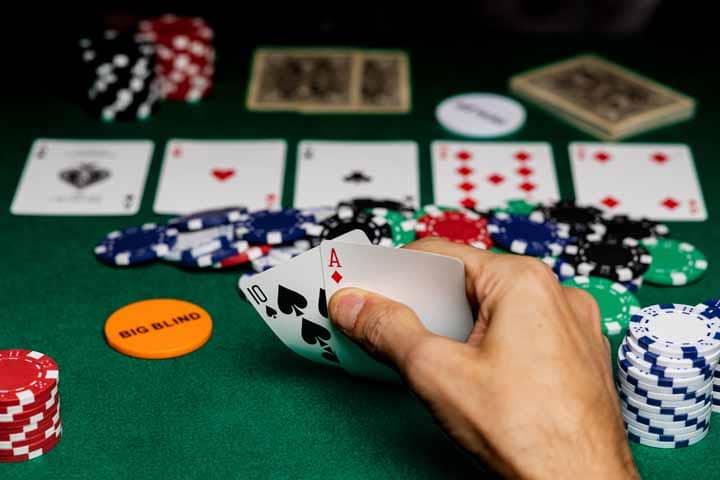
Your main idea is still survival, but at this point, you'll have to work more actively to accomplish this goal.
You’ll need to start putting your chips to work, especially in the later poker positions.
While stealing blinds wasn’t a big deal in the early phase, now it becomes quite important, especially as antes will likely kick in.
If you have a stack of 35 big blinds and can add two or three blinds to it without a fight, by just stealing the pot before the flop, that's a significant increase.
As the tournament progresses, the bubble phase will start to loom as well. You’ll be getting close to the money, so now you’ll have a dilemma at your hands.
On the one hand, you don't want to go out before cashing; on the other, you don't want just to bleed your poker chips away and basically surrender the chance of actually winning the tournament.
This is probably the trickiest phase of the three, but here are a few tips to live and die by:
- Look for opportunities to steal uncontested pots (raise from button and cutoff when folded to you with a wide range of hands)
- As the bubble approaches, be more aggressive against the players you have covered. They’ll be less likely to playback as you can eliminate them.
- By the same virtue, try to avoid players that cover you unless you have a big hand.
- Be careful not to commit yourself with weak hands against short stacks. Sometimes it’s fine to fold and not try to steal the pot if you’re likely to face a 3-bet shove from one of the players still to act.
Your main goal during this stage is to maintain a workable stack. Don’t obsess over the average stack because that’s not nearly as important as some make it to be.
You just want to have a stack that allows you some maneuvering room.
As long as you have 30 to 40 big blind in a freezeout poker MTT, you’re doing okay. With a few lucky hands, you can easily become the tournament chip leader from that position.
The Late Stage: Fighting for Every Chip
As the freezeout tournament progresses into the late stage, you’ll structure your strategy based on your stack size.
If you have a big stack, you can use it to put pressure on shorter stacks.
By this point, you’ll usually make money, so they’ll always have to balance between trying to double up or waiting it out to make a few more pay jumps.
At this point in a tournament, you should be playing for the win.
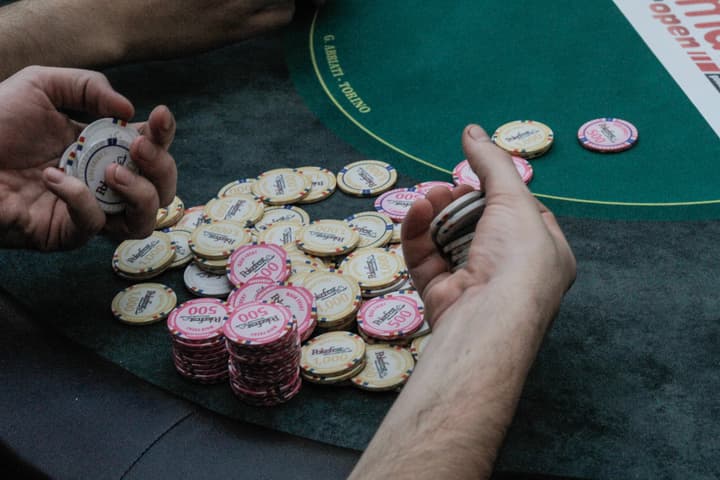
This isn’t to say that you should completely disregard the ICM, but pay jumps are usually not that significant until you make it very close to the final table.
You want to keep building your stack and try to position yourself so that you can win the whole thing when the time comes.
Sometimes, though, you’ll find yourself sitting on the short stack, and this is where you need to step up your aggression and fight for every pot.
If you find yourself sitting with 10 to 15 big blinds, winning just blinds and antes becomes huge. Don't be afraid to move all-in with any reasonable hands from late positions.
If you’re in the cutoff or the button, any Ace will do, most Kings and Queens, almost all suited connectors but the smallest ones, and all pairs.
You’d much rather shove yourself with a weaker hand and have a chance to win the pot uncontested than call off with a decent (but not premium) hand.
To develop a better understanding of what cards to play from what positions during this stage of a freezeout poker event, check out these push fold charts. You can even have them open while playing, and it will surely help you make better and math-based decisions.
Going for the Win: Playing the Final Table in Freezout Poker Tournaments
Making the final table of a freezeout poker MTT is one of the best feelings in the world. There are no other tables left to worry about. All that’s left between you and the first place is the last few players sitting around you.
You can almost observe the final table as a tournament of its own.
A lot of your final table strategy will depend on the factors such as:
- Your stack at the start (are you the short stack, the chip leader, or somewhere in the middle?)
- The position at the table (do you have weak players to your left?)
- Payout structure (how much is every pay jump worth?)
As a big stack, you’ll want to put pressure on your opponents and make them give up as many pots as possible without reaching the showdown. If you aren’t in the immediate danger of being eliminated, you can afford to take a riskier approach and put others to the test.
As a short stack, you really don't have much to wait for.
Even if you somehow manage to make one pay jump initially, it usually won't make that much difference. You want to be looking for the spots to get your chips in the middle and double up.
This will put you back in the contention.
Navigating the middling stack is probably the hardest part of freezout poker tournament final tables.
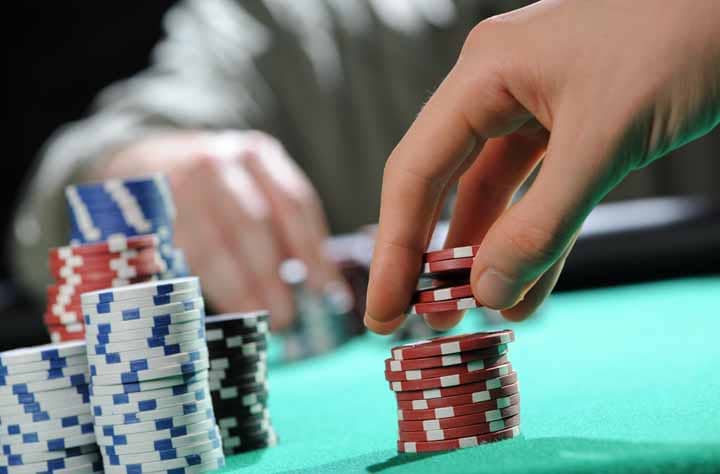
You'll be looking for spots to get more chips but also have to think about short stacks and the likelihood they'll probably bust soon, guaranteeing a bigger payday for you.
Laddering (moving up the pay ladder) is important, but don’t let it influence your strategy so much that you start missing out on significantly +EV spots.
You don't want to be folding big hands just because there is a short stack about to bust out.
You might lock up a small pay jump by doing so, but you’re also missing out on the opportunity to win a big pot and put yourself in the spot to win the tournament. That opportunity may not come again, so don’t be quick to fold your monsters just to “lock up” a few more bucks.
If you are in doubt how to select your opening hands, grab this poker cheat sheet, and you will know how to proceed.
Pros & Cons of Poker Freezeout MTTs
Like every poker format, freezeout poker tournaments have certain advantages and disadvantages. When deciding whether this is the right format for you, it’s always good to look at both sides.
Freezout MTTs pros:
- Freezout strategy is probably the simplest and easiest to learn out of all tournament variations
- Freezout fields are usually more manageable as players can’t reenter or rebuy
- Players with bigger bankrolls can't gamble it up until they build a big stack.
Cons:
- Smaller fields and no rebuys mean smaller prize pools
- Once you’re eliminated, you can’t get back in, which isn’t ideal in the live setting where there may be only one daily tournament running
- Variance is higher in freezeout tournaments because there are no bounties or other prizes to offset losses.
Final Freezeout Poker Tournament Tips & Summary
Freezeout poker tournaments remain one of the purest forms of poker out there. They offer a level playing field for all players as everyone gets just one shot.
You may or may not like this fact, but this is the perfect format if you do.
To round this article up, here are a few short and simple tips to keep in mind when playing freezeout MTTs:
- Keep in mind that your tournament life is important: you don’t want to put your stack on the line if you don’t have to. As long as you have a chip and a chair, you have a shot.
- Stick to a tight and straightforward strategy during the early phase: play solid ABC poker and let your opponents make big mistakes. You don't care too much about winning small pots early on, and you don't want to put yourself in a tough spot trying to win a few blinds.
- Learn about ICM: The independent Chip Model is really important for any tournament player. It will tell you everything you need to know about adjusting your play in relation to payouts, pay jumps, etc. It might take you some time to learn, but it will be worth it.
- Don’t let your stack dwindle: if blinds start catching up to you, you need to take an active approach. If cards aren’t falling your way, start looking for good spots to try and steal some pots with bad hands. It’s better than going down without the fight.
Learning the freezeout poker tournament strategy isn't that hard. A lot of it makes sense, and as you gather more experience, some concepts will start to make much more sense.
Just keep in mind that this particular format comes with high variance, and you will probably have to bust many tournaments before you finally get that one big win.
It’s just the nature of the beast, I’m afraid, so if that’s not something you want to deal with, you might want to check out other options like cash games or Spin and Goes.








